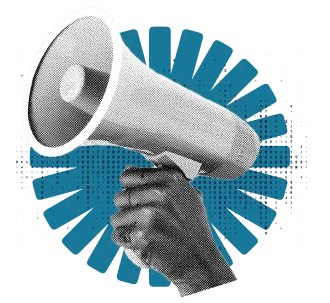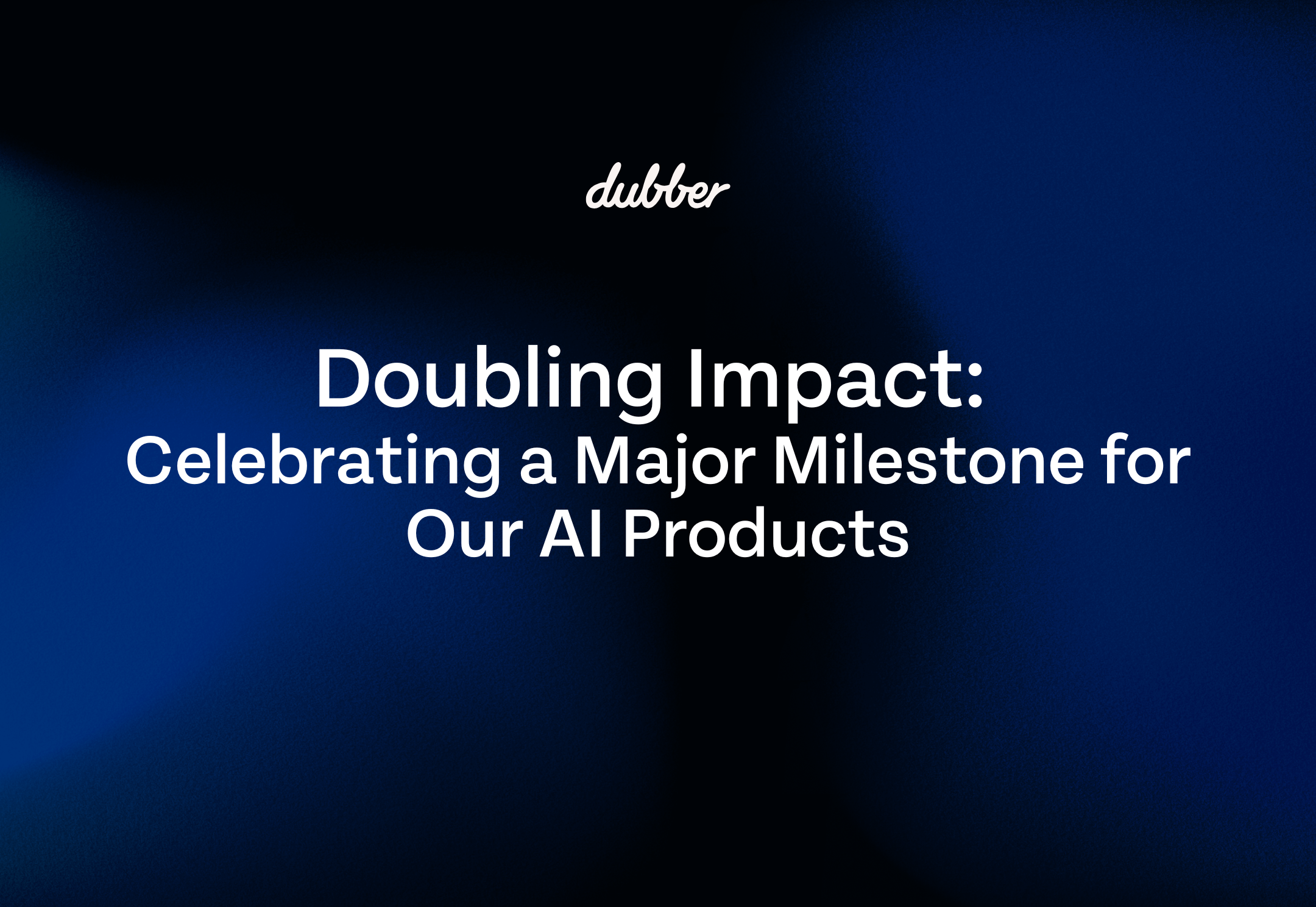
Dubber Annual Report 30 June 2019
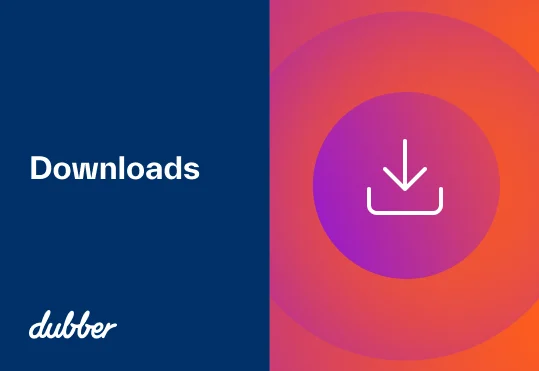
Corporate Governance Statement June 2019

The new Meeting Recorder tool, exclusively available in the Dubber mobile app, allows users to record meetings from their phone, store them securely in the cloud, and even transcribe them with Zoe voice AI. Record interviews, team meetings, or any conversation you might want to refer to in the future with this essential new tool. Meeting Recorder is as easy as pressing a button: once the meeting is over, it is available to replay just like your calls.
The death of minute-taking
Have you ever been so busy taking notes that you’ve missed what was said next? With Meeting Recorder you can give meeting participants your full attention, knowing you can replay the meeting at any time. With no need to take minutes, meetings can flow uninterrupted. Also, with Zoe, a full transcription of the meeting can be obtained and circulated as a follow-up to the meeting: ensuring nobody misses an important detail.
Transcripts can prompt action points and make collaboration more efficient. Zoe also analyses the sentiment of meeting participants and breaks every recording into sections assigned with a positive, neutral or negative rating. Alerts can be created to notify users of meetings that have been rated as having negative sentiment, and team managers can be alerted to meetings carried out by their direct reports to ensure that they are adhering to policies.
Pinpoint important moments with voice AI
With a full transcription of a meeting available with Zoe voice AI, locating a specific meeting recording is easy with searchable text and keywords. Stay organised by adding tags (such as customer name and attendees) and even attach comments and notes.
Never run out of storage
Unlike other mobile recording apps, Meeting Recorder stores all of your recordings in the cloud, just like your calls: so you’ll never run out of space. This is especially helpful when complying with regulations such as MiFID II, which requires financial interactions to be recorded and stored for up to 7 years. Even if you lose your device you can rest assured that your recordings will be safe in the cloud. Meetings can also be recorded on one device and accessed on another, and recordings can be integrated with existing applications, such as CRM systems, for added productivity, through Dubber’s open API.
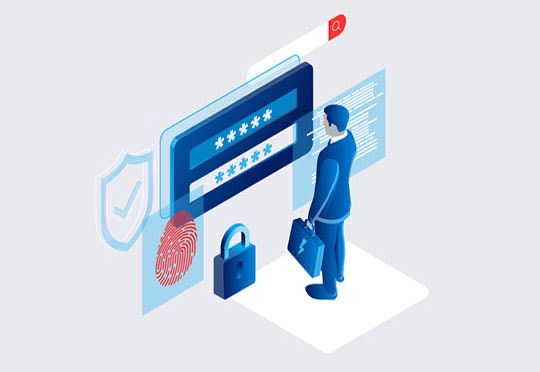
Dubber are committed to providing the highest levels of security for our native cloud platform, as well as offering unlimited scalability, and rapid deployment to meet and exceed the expectations of our clients with no CapEx. Read on to find out the ways in which we maintain our high standards of security.
Cloud security
We chose to build our products and services in the cloud, specifically to leverage the levels of security that are only made possible through the cloud. Security is maintained at every stage of the call capture and data processing journey, with AES-256 encryption protecting recordings and multiple data storage sites mitigating any disaster recovery concerns.
Safe and secure sharing
The security of our platform is just one aspect that we considered when creating our solution. We also wanted to ensure that data was protected while still maintaining accessibility for businesses and individuals. Unlocking the valuable data stored in phone calls is one of the main reasons that customers choose Dubber solutions, but it is important to make sure that the owners of this data are protected. We created teams and permissions settings that restrict access to recordings, and a unique sharing function that does not share files with third parties but instead emails a non-downloadable link that expires for added security.
Local storage myths busted
Unfortunately, security is often a concern that prevents businesses from moving to the cloud. In reality, moving storage off-premise means organisations immediately mitigate the risk of having vulnerable data on-site. With data centres all over the world, we can offer a variety of options for organisations who require specific storage locations for their data. These storage centres also offer data sovereignty, so data is only stored in one geographic location. Within each location, data is written to multiple data centres for geographic redundancy: preventing data loss in the event that a data centre is compromised. These data centres guarantee availability of every single recorded call at any time, allowing quick and easy access to data for every customer.
Dubber’s cloud storage employs the latest in encryption technology to offer the highest protection, which is managed by a team of experts at a level that legacy solutions cannot compete with. Any data stored within Dubber is only stored by us, and not owned by us. Data rights are retained by the owners of the data, Dubber merely offer solutions that capture, process, and store data.
We are ISO certified
Dubber is ISO 27001 compliant. ISO 27001 is the globally recognised and respected standard for information security management systems (ISMS). In order to gain certification, an organisation must develop and implement a rigorous security management programme: including an ISMS. Organisations must systematically evaluate information security risks, taking the impact of security threats and vulnerabilities into consideration. Any security risks must be addressed with a comprehensive suite of information security controls. An audit and compliance management process must be implemented to ensure ongoing protection.
This achievement is an assurance that Dubber’s data security processes are effective at every level of our organisation. The Dubber core principle is one of agile and continuous improvement and this extends to our data security commitment.
Download our ISO certificate here.
How we protect data
- Establishing, maintaining, monitoring, reviewing, auditing and continually improving our ISMS
- Establishing, reviewing and communicating our information security objectives and performance measures
- Committing to satisfy business, legal, and regulatory and contractual security obligations
- Committing to continual improvement of our ISMS by seeking feedback from clients, staff, and through internal and external audits
- Ensuring that the ISMS is communicated with every member of the Dubber team
Have any questions about our security? Drop us a line.

Zoe is Dubber’s voice AI technology, which transcribes everyday phone calls: unlocking previously untapped insights to aid in improving business efficiency and customer experience, and reducing churn.
What if you knew when your most important customer had called your business, and wasn’t happy? With Zoe, you can receive notifications for calls from specified numbers that have a negative sentiment score. These notifications give you the insights required to understand what caused the negative sentiment and so you are able to take a proactive approach and call them straight back. This personal attention can win back their trust, and their business.
Zoe transforms voice data from calls recorded by Dubber into text and uses the data to analyse the call content. Calls are rated as positive, neutral, or negative, based on Zoe’s analysis. This rating can then be used to trigger custom alerts to managers or supervisors, such as calls with negative sentiment. These alerts can allow businesses to improve customer loyalty and churn figures.
Custom alerts are just one application of the latest version of our Zoe voice AI technology. Sentiment has the potential to transform customer service. Zoe makes it quick and easy to review important conversations and ensure the success of a customer service team.
Accurately pinpoint key information
In the Dubber portal, a full breakdown of the Sentiment rating can be accessed, alongside a transcription of what was said. Sentiment scores are assigned to individual sections of a call, based on the words spoken, and the pattern of speech. These scores are used to create an overall rating for a call. This allows supervisors to identify exactly what went wrong with a negative call, or in what way an agent provided excellent customer service to make a customer happy.
AI for every phone
Zoe is the perfect tool for companies of all sizes, providing a way for time-poor business owners and managers to stay on top of their business communications without having to replay all of their recorded calls. More and more organisations are recording their conversations, as call recording is increasingly available on affordable OpEx subscriptions. Zoe lets companies utilise the data from these calls to their full potential, instantly.
Good customer service can be key to differentiating a brand from the competition. The value of being able to retain important customers makes Zoe a vital investment for any business.
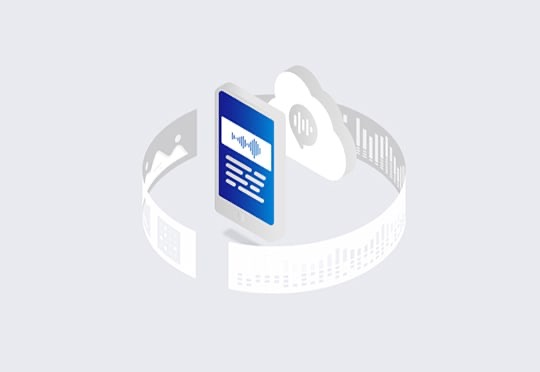
Organisations who download their recorded calls to local storage are putting valuable data at risk of damage, theft, or tampering. Dubber are committed to providing a secure and reliable call recording platform to meet and exceed the expectations of our customers: at an affordable monthly cost, with zero CapEx.
Why shouldn’t you download your calls?
There are four main risks associated with downloading recorded calls to local storage:
- Security: Recorded calls downloaded to local storage are much more vulnerable to theft, damage, or tampering. Having only one on-premise server means fire or power shortages could destroy all recordings.
- Access: Storing data locally can be detrimental to team members who need to access recordings, as it is often more difficult to manage and access recordings outside of a dedicated recording platform.
- Cost: Using and maintaining on-premise storage solutions is expensive: both to set up and maintain on a day-to-day basis. Organisations need to either employ trained staff members, or to engage expensive third parties to manage the solutions. As incidents can occur at any time, this could result in call-out charges.
- No audit trail: With local storage there is no audit trail. Users can listen, share, or delete recordings with no record of their actions.
Protect against risk with secure cloud storage
Utilising Dubber’s cloud solution, organisations immediately mitigate the risk of having vulnerable data on-site. The Dubber solution also employs the latest in encryption technology to offer the highest protection, which is managed by a team of experts at a level that legacy solutions cannot compete with.
Instant access to every call
Cloud storage with Dubber guarantees the availability of every single recorded call at any time, allowing quick and easy access to data for every customer. Storing calls with Dubber also allows users to retrieve calls instantly with advanced elastic search functionality that trawls every call, no matter when it was recorded. Cloud storage also facilitates ease of use for remote workers or those based in different offices. With all recorded calls available to access from any location, staff working across different locations can continue to playback recordings and use voice data without being in the office.
Consistent costs with no surprises
The costly management and staff resources associated with local storage can all be avoided with long-term storage with Dubber. All of the setup, management, and ongoing maintenance is covered by Dubber, meaning that costs stay the same, no matter what. The monthly subscription fee is the only expense, and there are no worries about unexpected costs in the future. Dubber’s SaaS model keeps costs down to a low monthly payment, rather than requiring CapEx that can be difficult when obtaining budget allowances.
Detailed audit trails
Access to calls is restricted by permissions structures to prevent unauthorised access or sharing of calls or data, and all activity is tracked and timestamped in order to create comprehensive audit trails. A full audit is collected for any transaction within the Dubber platform. All activity, such as users listening to, sharing, and deleting recordings, is monitored and logged within the platform. This logging provides both real-time monitoring of the platform and its status.
Offer your customers cost-effective storage from Dubber
Join Dubber and offer your customers long-term, secure cloud storage for their recorded calls. With no restrictions of storage space, no requirements of on-premise equipment, and instant access to all recorded calls, Dubber’s solution is second to none. What this offers is the opportunity to safely store huge amounts of valuable data, worth much more than marginal savings on a call recording package that might allow only 90 days of storage.
Get in touch to find out more about the benefits of long-term storage with Dubber.

It’s all in the palm of your hand
Out of the office and wish you could find your notes from an important phone call or meeting? With the latest version of the Dubber mobile app, you can play back your calls and meetings: anytime, anywhere, from any phone.
Keep all your recordings in the palm of your hand with the Dubber mobile app, available on iOS and Android. Play, share, organise, and analyse your calls with our powerful Zoe voice AI, from anywhere in the world. The app now comes with the new Meeting Recorder tool, which allows users to record meetings and store them securely in the cloud.
The full Dubber experience in an app
Working life doesn’t stop when you leave the office. With the Dubber app, you are no longer tied to your computer. From your phone, you can experience the full suite of Dubber tools wherever you are. View and listen to all of your recorded calls and meetings, just as you would in the web browser version of Dubber.
Our easy search means you can find calls using a range of criteria from date and time to call recipient. Within the playback page you can skip forward to replay an important detail or, if you have Zoe enabled, search the transcription and click on a word to play a conversation from that exact moment.
Tag your recordings from the app to organise them for easy retrieval and management. For a quick highlight of calls that require your action, mark your important calls with our star icon and separate them from the rest of your archive.
Zoe: powerful voice AI in your pocket
The Dubber app enables you to access the power of Zoe voice AI in the palm of your hand: transcribing your calls and meetings, measuring sentiment, and extracting keywords, timestamps and other metadata. Zoe can automate workflows through API integrations with third-party applications such as your CRM. With Zoe Notifications, you can create custom keyword and sentiment alerts to protect your business through proactive customer service.
Meeting Recorder: The death of minute taking?
Meeting Recorder is an exclusive recording tool with voice AI for smart transcription, available as part of the Dubber mobile app. Meeting Recorder securely stores all of your meetings in the cloud so they can be accessed from multiple devices and locations, and you’ll never run out of storage. Hit record during important meetings and talks and let the power of Dubber’s voice AI do the rest.
Meeting Recorder is the only recording app available with Zoe voice AI, eradicating the need for taking minutes with automated voice-to-text transcription. The transcript of the meeting can then be circulated as a follow-up. Zoe also allows you to search for meetings by keywords spoken, as well as within the transcript of a meeting: allowing you to pinpoint the exact part of a meeting you want to review. Sentiment is even analysed: showing an overall rating for the meeting, as well as a detailed breakdown.
Meeting Recorder is an ideal tool for sales and project managers who want to capture their team meetings in order to follow up on action points or as a coaching resource.
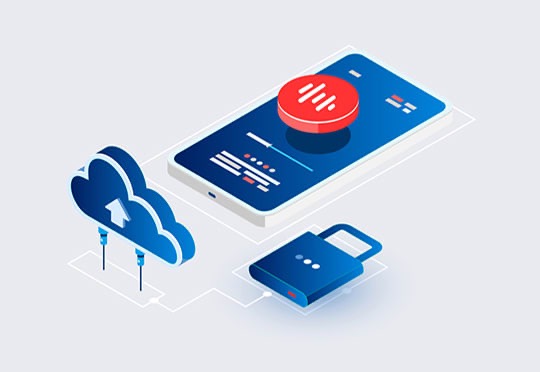
How much personal data did you share today? Within a digital society, where web browsers sometimes know more about us than our friends, security is more important than ever. For businesses who process personal data from their consumers, ensuring they protect this information is vital.
The consequences of poor security
Security breaches are big news: the headlines that result from data hacks can be disastrous for an organisation’s reputation. Consumer relationships with brands are built on trust and customers need to feel that their data is safe, otherwise they are likely to look for alternatives.
In order to help protect consumer data, the EU have enacted the General Data Protection Regulation (GDPR) to set a standard for businesses to adhere to when dealing with the management and storage of customer data. Failure to comply with the data protection requirements of this regulation can result in fines of up to €20m or 4% of annual turnover for the prior year, whichever is higher. Read our post on how the GDPR will affect call recording for more information.
In order to comply with the GDPR, and to ensure that their customers feel that their data is secure, businesses need to examine their data storage. In the past many organisations saw on-site storage as the best option, but the rise of the cloud has shown the benefits of digital transformation and the advantages of cloud storage over on-premise solutions.
What are the risks of storing calls on-premise?
Recorded calls downloaded to local storage are much more vulnerable to theft, damage, or tampering. Having only one on-premise server means fire or power shortages could destroy all recordings. With local storage there is no audit trail. Users can listen, share, or delete recordings with no record of their actions.
With a cloud storage solution from Dubber, not only are calls more secure but there are many other advantages over on-site solutions. The cloud allows users to have convenient access to information held within phone calls — anytime, anywhere. This access is managed through strict security permissions that are allocated by designated admin users, and a full audit trail can be traced. Colleagues can collaborate from across locations, and workers are no longer tied to their desks.
Dubber’s security
Recorded calls are not only a valuable source of insight, for some businesses they make the difference between compliance and non compliance. That’s why at Dubber we have put security at the forefront of every stage of the recording process.
Simple and secure access: we ensure that users can easily and securely log in to view calls, but only with strong passwords. With strict teams and permissions settings, calls cannot be accessed by unauthorised personnel.
Single sign-on: the Dubber portal can now be accessed with single sign-on, allowing users to authenticate themselves using third-party credentials.
Sophisticated security and encryption: recorded calls are encrypted using AES-256 at every stage of the recording process.
Industry-leading security standards: Dubber is ISO 27001 compliant. Download our ISO certificate here.
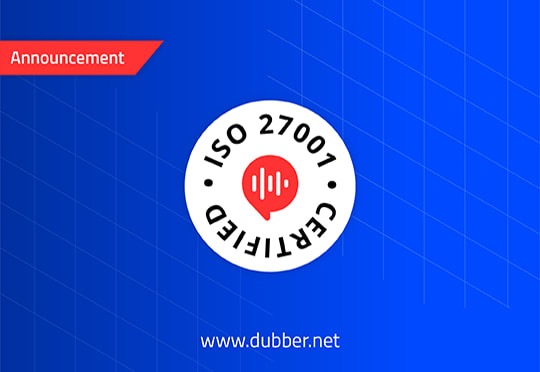
ISO 27001 is an international standard for information security, which provides a framework for the information security management system (ISMS) within an organisation. Like Dubber, ISO 27001 is all about constant improvement, and encourages a system that works to constantly optimise itself.
In order to gain certification, we developed and implemented a rigorous security management programme, including an ISMS. This management system went through a rigorous auditing process that thoroughly examined our approach to information security and the controls we have put in place. We were able to achieve this by establishing an ISMS leadership team, comprising of senior management, and an InfoSec lead to champion and to manage this within Dubber. We engaged InfoSec consultant QMIS in the early stages of the initiative and we leveraged the ISMS.online tool to enable us to centrally manage our ISMS, and to make ongoing governance easier for us in the long term. In order to receive our certificate, we worked with these cloud security specialists and were put through a rigorous auditing process that thoroughly examined the information security management and controls we have put in place.
“Our ISO 27001 certification is an important indication of our dedication to protecting the information handled by Dubber. Our approach to compliance and security has always been proactive and rooted in continuous improvement, and this certification shows our dedication and long-term commitment to data protection.”
— James Slaney, Dubber Head of Product
The key principles
The three tenets of an ISO 27001 compliant ISMS are:
- Confidentiality: ensuring access to information is restricted to certain authorised individuals
- Integrity: ensuring that information processing methods are consistently accurate and thorough
- Availability: making access to information and assets available to authorised individuals
How we protect data
Here are some of the ways we at Dubber are continually working to protect the data we process both on our platform and throughout our organisation:
- Establishing, maintaining, monitoring, reviewing, auditing and continually improving our ISMS
- Establishing, reviewing and communicating our information security objectives and performance measures
- Committing to satisfy business, legal, and regulatory and contractual security obligations
- Committing to continual improvement of our ISMS by seeking feedback from clients, staff, and through internal and external audits
- Ensuring that the ISMS is communicated with every member of the Dubber team
To learn more about Dubber security, you can download our white paper, or get in touch with one of our team.
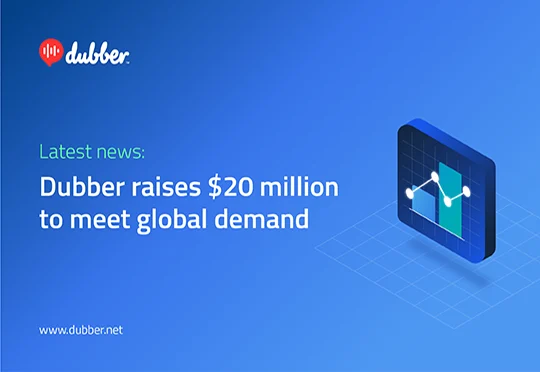
We are pleased to announce that we have successfully secured AUD$22 million from investors, with an investor demand that exceeded our aims. These funds will support our continued pursuit of global growth opportunities and allow us to scale to meet increased demand and secure long-term recurring revenue.
How this raise will be used
Dubber have existing agreements with 92 telecommunications service providers and we are continuing to see strong demand for our products. Service providers are seeking to provide services to their customers that are rich in features and they are standardising these across multiple networks. These existing relationships will be instrumental in driving customer uptake of our services and bring with them long-term value through recurring revenue. Our new investment will go towards our continued expansion into new deployments with service providers across the globe, particularly in North America and Europe.
Our Dubber Connect model is a fully-managed service that allows rapid deployment of our products. Its popularity with service providers means that we will be investing in additional business development and sales staff to ensure we can develop this model further and refine our offering.
As the embedded recording service for the Cisco BroadCloud platform, Dubber has substantial global opportunities. Funding will support growth avenues through the global presence of Cisco BroadCloud. Our recent agreement with IBM to market a joint technology solution will also receive support to fully take advantage of IBM’s substantial client base.
A ‘significant milestone’
Steve McGovern, Dubber CEO, commented on the raise: “This is a significant milestone for Dubber, following strong growth across our key metrics. Dubber has a unique advantage through its operating leverage, that to date has allowed us to service the largest carriers in the world, in a number of different continents, with less than 60 employees. We are truly excited to now invest in the next stage of growth to ensure that we become the de-facto industry solution in our market.”
Download our ASX announcementfor full details of the raise and how we plan to use the funds.
